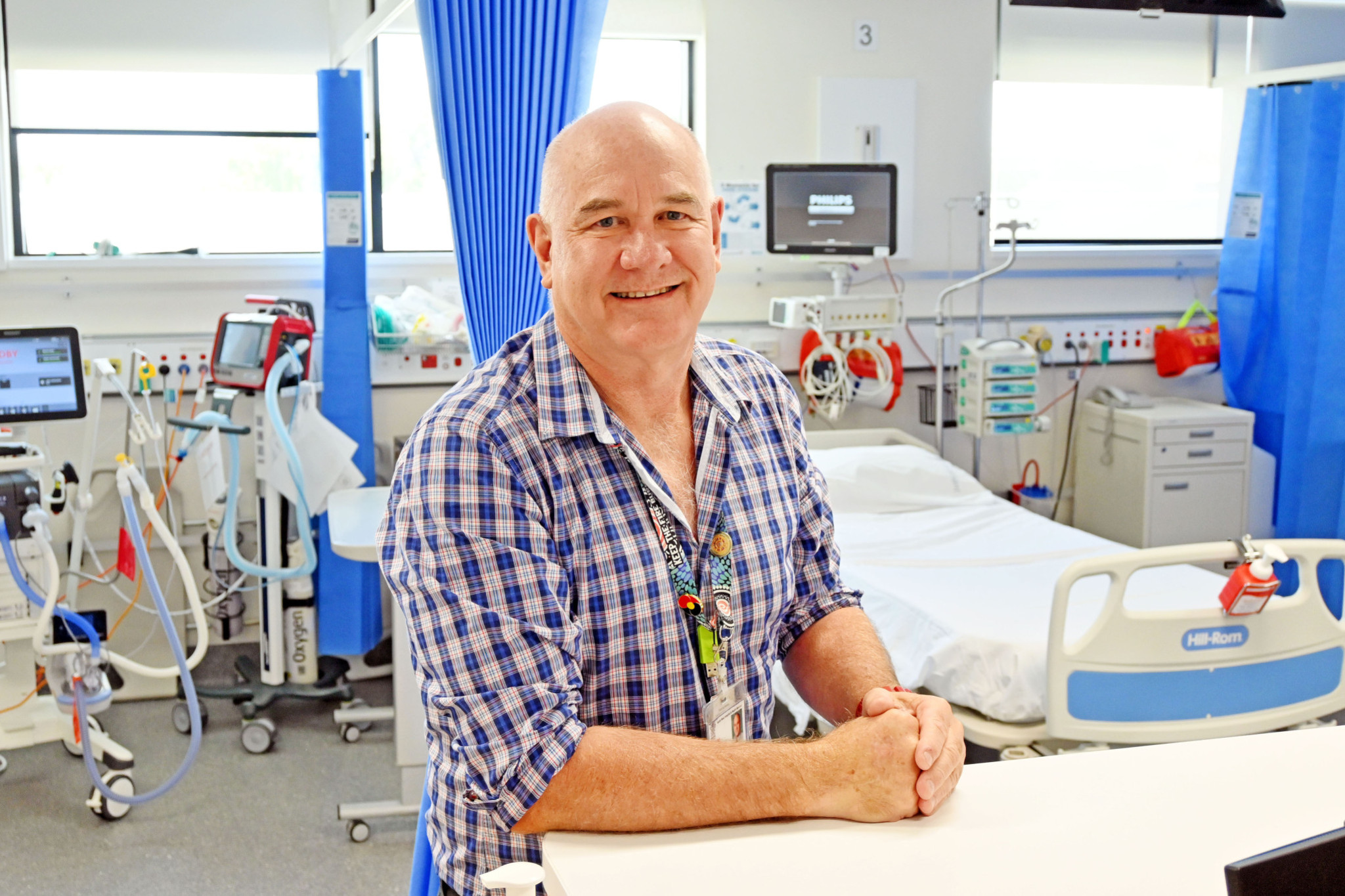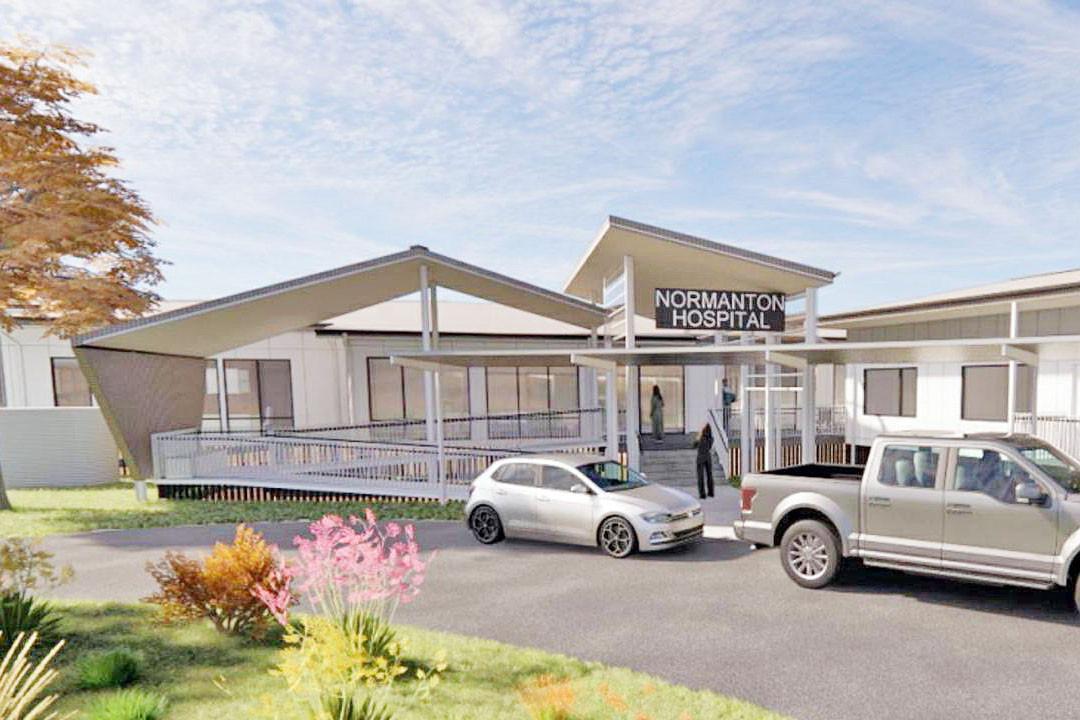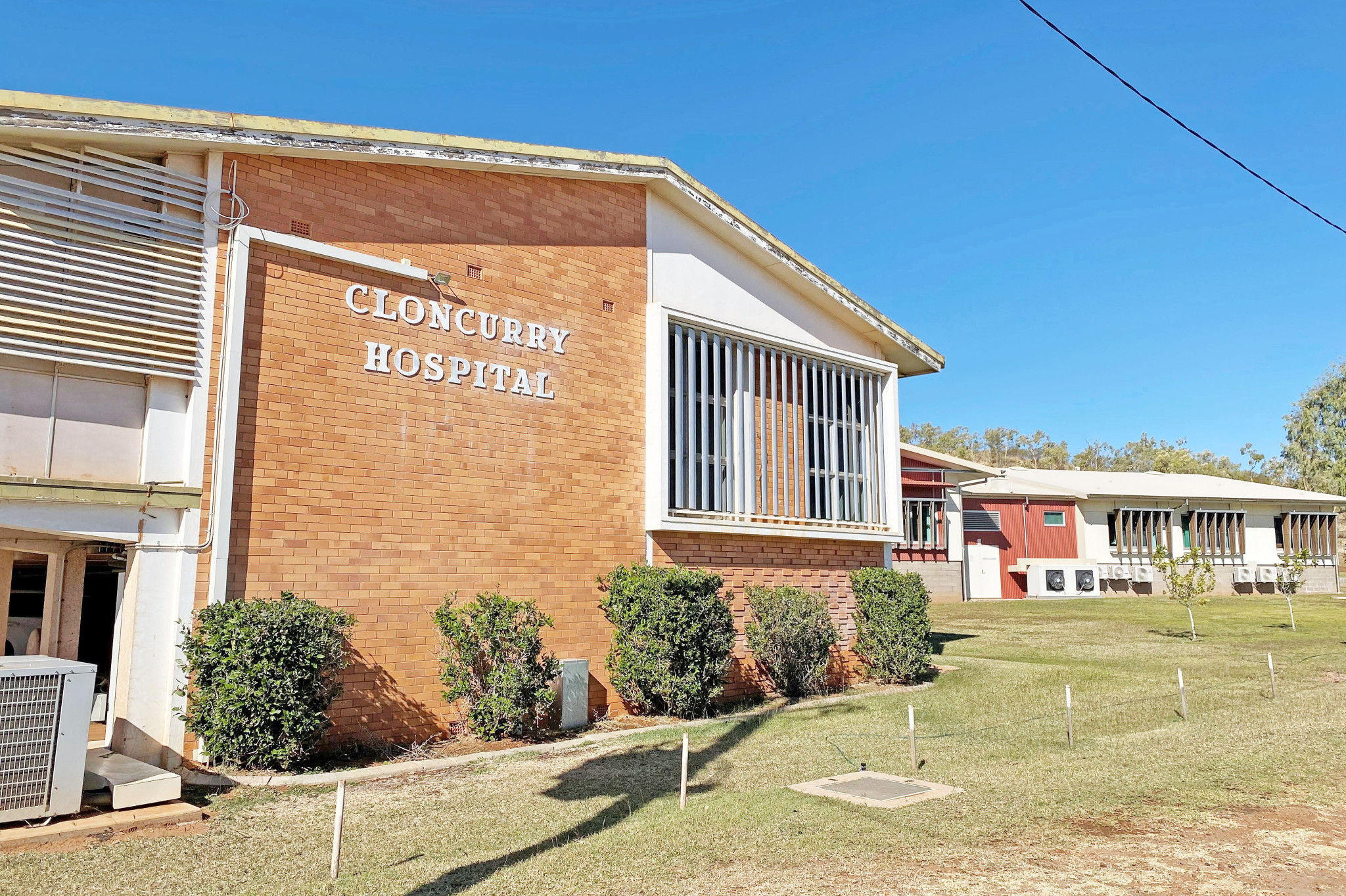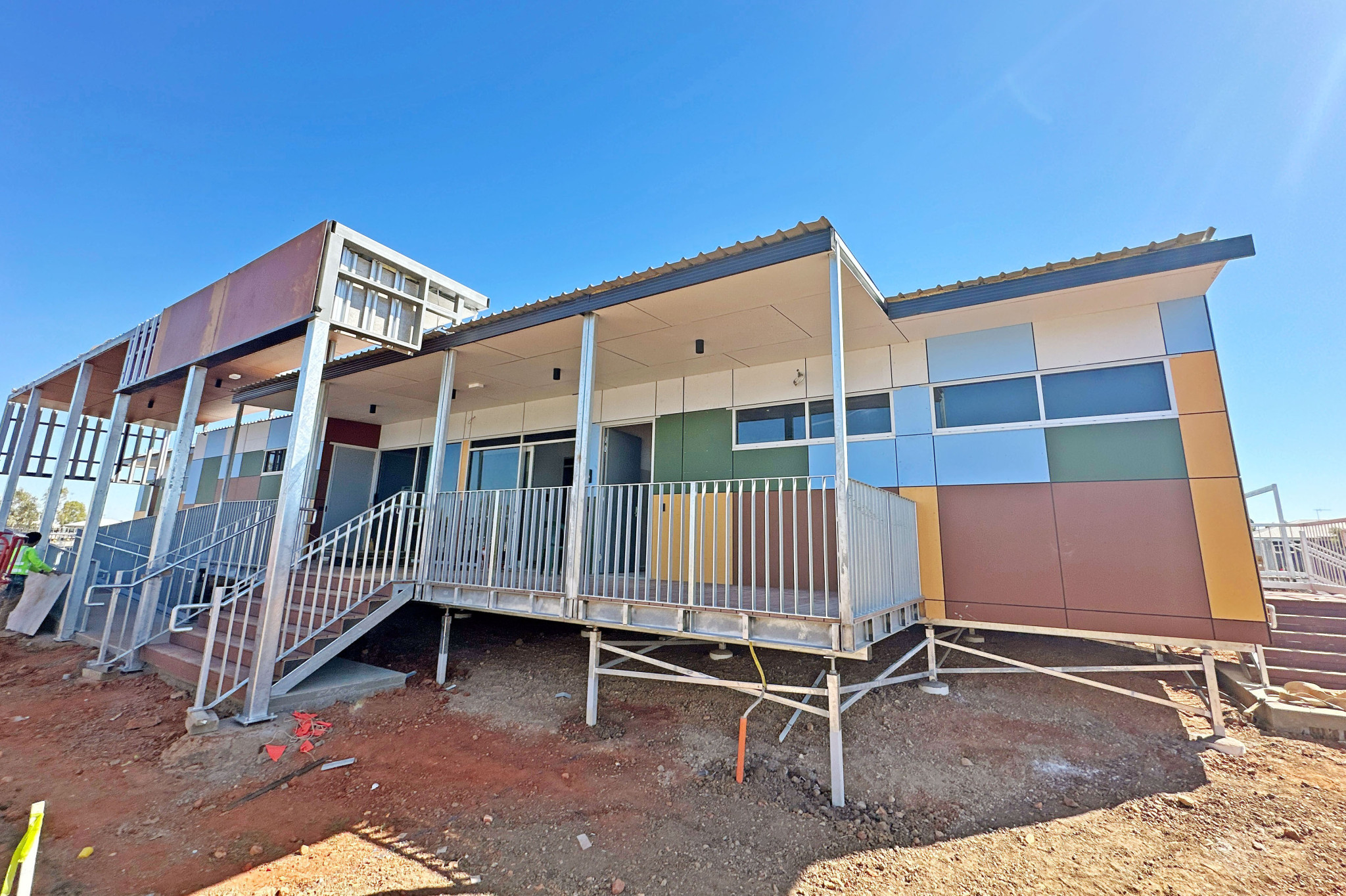General News
13 November, 2024
Health dilemma: NWHHS boss speaks about key issues facing service
Sean Birgan sat down for an interview to discuss some of the challenges and opportunities for the health service.

The North West Health and Hospital Service is undertaking its biggest infrastructure rollout in its history. This comes at a time when the region is increasingly reliant on locum health workers as it continues to struggle to attract a permanent workforce. North West Weekly’s TROY ROWLING sat down with chief executive SEAN BIRGAN to gain some insight into the latest developments for our biggest healthcare provider ...
TR: North West Hospital and Health Service is overseeing a huge expansion of services across the North West – what changes are the public likely to see in the coming months and years?
SB: I can honestly say there are more infrastructure builds currently going on in the North West than there ever has been before and they will continue over the next couple of years.
There are $181 million worth of capital projects across the North West. Some of the big changes we are going to see in the near future include a brand-new community health centre being built on Mornington Island, which is due to be completed prior to Christmas.
It is a four-treatment room facility that will better house our remote staff and teams that visit the island to deliver clinical care.
It will allow us to bring the health council of Mornington Island staff onto the hospital precinct. So, we will have all of the health team together on the one campus.
In Doomadgee, we are in the process of completing a build for a mental health facility on the Doomadgee hospital campus.
It will allow us to provide a better service for the community in relation to mental health.
When it is not being used for mental health purposes, it will be used by other clinical teams. The new Doomadgee hospital is in the community consultation phase.
We are committed and the department of health is committed to building a new hospital at Doomadgee within the next two years.
So that will be a brand-new facility and that’s pretty exciting.
The current building is over 40 years old and needs replacement.
In Normanton, we have got a new hospital that has in fact been built – it is one of the new module designs sitting at completion now at a factory in Toowoomba. The plans are afoot now to have those modules moved and transferred up to Normanton to be erected at a site on the hospital campus – that will be a brand new Normanton facility – at this stage, weather permitting,
I suspect that won’t be completed until the first quarter next year – so that is pretty exciting for the Normanton community.
I have seen some of these module design hospitals before – such as the one in Roma, which has a similar sort of design – I can almost guarantee the people of Normanton will be pretty impressed with the design.
In Mount Isa, the biggest challenge in the health sector is Mount Isa hospital – it is 60 years old and we are working really hard to have this facility replaced with a new hospital.
There is a fair amount of work, to be honest, and I can’t announce anything because I haven’t locked anything down with the department. But I would like to see it as soon as possible – the realistic thing is that its quite expensive – there needs to be discussions with the Department and Treasury and forward estimates and allocations of dollars – I would like to see a new hospital in the next 10 years, if not sooner.
Many in the Mount Isa community would know the old site for The Club was purchased in April – that is in the process of being demolished in the next few weeks and that site has been earmarked for a new mental health facility.
The team has been working really hard to design the type of care that will be provided to mental health patients there – and we would anticipate in the next two years we would have a new structure on that site that would enhance the health service capability to provide mental health facilities to the community.
It is an area of great need. It is sad to say we have a very high rate of self-harm and suicide in the North West – it is almost twice the rate of the state average – and that just highlights to me and my team that there is a great deal of work that needs to be done in that area.
The Camooweal hospital build is complete, and the team are transferring from the old building into the new building.
The official opening is planned on November 26 and I can say that is a state-of-the-art facility to assist us to deliver care for Camooweal.
It is not just about buildings it is about the staff and having the right staff to deliver the care, but you’ve got to have good infrastructure.
Our community and patients deserve to be treated in brand new, state-of-the-art buildings, but also our staff deserve to work in new modern buildings that are easy to clean and that are well air conditioned and have facilities to deliver modern day health care out here in our remote area.

Will that new mental health facility at the current old tavern site include in-patient treatment?
Yes, the model of treatment the design team has worked with the Department of Health to create is called “step up, step down” beds.
These are lower acuity mental health patients and yes, they are in-patient beds. Unfortunately, at this point in time, we are not having in-patient acutes for serious mental health cases – we are working on that here.
I like to think that as we start to design the new Mount Isa hospital that we will try to incorporate that service.
There will be a number of beds that will be classed as overnight beds – these are patients that ordinarily would be transferred to Townsville hospital so they will get to remain here in North West Queensland, in Mount Isa, when we build this facility.
We understand that NWHHS would like to take control of the Haymans Electrical building (on Camooweal Street) across the road from the hospital. Can you confirm if that’s correct?
We haven’t signed any contracts with the owners of that building yet but we are looking at taking over a lease when Haymans relocate to their new facility.
We have a number of storage locations around Mount Isa at the moment that we lease, which we use to store everything from furniture and clinical equipment to building and maintenance materials – so we will get to house all of that in one location adjacent to the hospital. We see that as a much more efficient and cost-effective way of running our back-of-health services.
Our health requirements are expanding – the needs of the community are expanding – we know there is a huge amount of chronic disease in the North West ... we are committed to working with government and non-government organisations to improve the level of care we are providing our community.
Recruitment of skilled professionals is always a challenge for any remote employer. How would you describe the current staffing efforts of NWHHS?
I would describe the recruitment space as being challenged – we are challenged in recruiting non-clinical and clinical staff just like all other remote and regional areas across the state.
What I can say is we have had more doctors and nurses and allied health professionals join the NWHHS in the last 18 months than ever before.
And that just doesn’t happen by chance – it happens because people want to come and work in the North West – not just in Mount Isa but also our remote locations.
Recruiting staff is never a fixed point – you can’t just say that we’ve got more staff than we did yesterday – we’ve got a couple of resignations and less people that we did in the past – but we know that over time we have got more people who want to come and work here.
The staff tell me they want to come and work here because we have an improving organisation culture – so the place here is a nice place to work.
If we decided not to use contract staff because they were too expensive or because we weren’t going to use them right away, then the community misses out on those clinical professionals.
We are working hard to attract new staff and I believe we are doing that – the closure of the mine is going to hurt us. We believe we have a portion of our staff – maybe around 30 per cent – who have a connection to the mine or the major bread winner may work at the mine, so we are currently planning around that.
We have got our recruitment teams out at various expos trying to sell and promote not just working at the hospital but also living in the North West because more people live where they work.
We have seen that work really well with our allied health teams – our physios and pharmacists and (in late October) we had all of our allied health positions filled.
That might change but it is a really important moment in time when we don’t have any vacancies in that space.

The NWHHS annual report shows a consistent and significant increase in fees paid to outside contract workers with a rise from $11.7m to $18.4m in 12 months. Similarly, fees paid for “professional services” have increased from $590,000 to $1.8m as well as a related column that shows an increase from $343,000 to $877,000? What explains these increases?
I give the example that part of our expansion has been renal services and to do that contract staff has been an important part of our workforce – if I had a magic wand and it was a perfect world, I would have all our staff permanently appointed to the NWHHS and provide the care to the community but that is just not the reality.
We make decisions about engaging contract staff – we don’t just do it willy nilly – the executive team is charged with making those difficult decisions, but we always put our community first.
For example, if we didn’t have a doctor to work in Doomadgee, and the only doctor we could get was a locum, then we will go down that path and engage them – in the background our recruitment team is working on identifying people who might want to work here permanently.
It is a reality of delivering a health service in a remote community that contract labour is a part of our workforce and that is being very honest. Ideally, having our own staff permanently working with us is our ultimate goal, but we have to balance that desire with needing to deliver a service to the community and I am committed to providing a service at the most efficient cost but sometimes that requires hiring contract staff.
I can give you an example, with our security service, we contract that out to an external company through an open merit tender process – for all intents and purposes, they are part of our team, but they are a contract service.
So to clarify, the majority of the contract labour costs is for frontline medical staff or does it include legal or consultancy fees given the infrastructure rollout?
The bulk of our contract staff relates to medical and nursing and midwifery staff. That is consistent with challenges for the health workforce across the state.
If we talk about legal costs – yes there are always legal costs, but they are insignificant compared to the cost we spend on our health workforce.
With cultural heritage – that is a complicated process – there are a number of expenses there that the health service does not actually bear – it is managed centrally within the Department of Health – but, in the scheme of things, those expenses are relatively small compared to the cost of the human labour which is what we need to provide the cost to the community.
We understand there are several senior medical staff, including heads of departments, that will be departing Mount Isa hospital shortly – what was the reason behind their departure? Are they retiring or are they being let go?
We are not letting anyone go – our senior medical staff are a valuable part of the health service and many of them have been here for many, many years – 12 or 16 years-plus, so I want to thank them for their long-term service – but we are not letting any of them go.
My understanding is a number of them have made a decision to go on leave and then retire.
It would be a pretty silly strategic move on my part to actively remove any health care staff from hospital staff considering many of them have provided long term service.
But again, many people reach the end of their career and make other decisions, and I fully respect that.

Are you concerned losing this corporate and local knowledge will impact frontline service delivery?
I am concerned about losing any experienced staff – including medical staff, nursing staff or even the building and engineering team – corporate knowledge is really hard to replace quickly, so the onus is on myself and my team to ensure that we transition that information across to other members of the team.
But yes, it is a concern. We are not alone in that.
I have been in health for 40 years and organisations suffer from someone being a role for a long time who makes a decision to leave and there is a knowledge gap there. We will patch that gap up and we will continue to provide a safe service.
We should be providing a service where people come to work in our environment, and we transfer that knowledge and education.
We should be developing the next generation of health care professionals and that is a really important part of what my team are working on at the moment. We have to work hard to fill those positions.
But from a community point of view, if we have to fill those positions in the short term with locum arrangements and that’s what we are doing in a couple of areas, then that’s what we will continue to do.
Any medical officer that works in North West is credentialled – so they go through a process of checking their ability to function in the role they are working in. That is a high-level process that gives me the assurance that they care they are going to provide the community is safe.
There was an internal review into the Patient Travel Subsidy Scheme conducted by Queensland Health last year. Did NWHHS contribute and should the daily PTSS rate be increased?
Absolutely we did contribute.
We went out and spoke to the community. Many of the complaints we receive in our health service relate to patient travel.
The big gain (from the review) was the four-day subsidy was scrapped – that was something the community told us was really hurting them, so we were very happy to see that change.
It’s an area where we spend a considerable around of money each year – $20 million for patient travel both domestically and via our aerial medical retrieval service.
Being a remote facility, it is something we have to do well.
There is an opportunity to do it more efficiently and the department has worked with us, and we have closed those budget deficiencies that we had from last year.
The community does it tough and many of our community members, especially those in remote areas, are suffering from cost-of-living, so anything the government or department can do to reduce the out-of-pocket expense is something I would fully support moving forward.
Stay tuned for the second and final part of Sean Birgan’s interview where he discusses other key issues facing the health service in the North West.